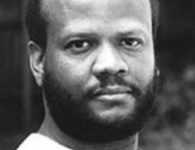Homer Plessy was a 30 year old, light-skinned man who could easily pass for white. Whatever his complexion, because of the one drop-rule, Plessy was considered a black man. Plessy was Creole, a term often referring to blacks in New Orleans signifying mixed heritage, and his ancestry could be traced back to France, Spain, and the Caribbean. On June 7th, 1892, Plessy boarded a white railroad car on the East Louisiana Railroad. The situation was planned, a direct response to Louisiana’s Separate Car Act of 1892. Black civil rights organizations took to the courts to challenge the law, and Plessy deliberately sat in the white section and identified himself as a black man.
After Plessy’s arrest, the case moved up to the Supreme Court. Lawyers challenged the Separate Car Act, arguing that the Thirteenth and Fourteenth Amendment were being violated by the Louisiana law. In 1896, the Supreme court ruled against Plessy in a seven man majority, deeming that separate but equal facilities for different races was admissible by the law. Justice Henry Brown wrote for the majority opinion, “The object of the Fourteenth Amendment was undoubtedly to enforce the absolute equality of the two races before the law, but in the nature of things it could not have been intended to abolish distinctions based upon color, or to enforce social, as distinguished from political equality, or a commingling of the two races upon terms unsatisfactory to either.”
There was only one opposer to the Plessy V. Ferguson ruling, Justice John Harlan. In his dissenting opinion, he wrote that “Our Constitution is color-blind, and neither knows nor tolerates classes among citizens. In respect of civil rights, all citizens are equal before the law. The present decision, it may well be apprehended, will not only stimulate aggressions, more or less brutal and irritating, upon the admitted rights of colored citizens, but will encourage the belief that it is possible, by means of state enactments, to defeat the beneficent purposes which the people of the United States had in view when they adopted the recent amendments of the Constitution.” Though in today’s era it is widely observed that the negative consequences of adopting a “color-blind” ideology turns a blind-eye to racial discrimination and rather perpetuates racism by ignoring its existence, the predictions Harlan wrote in his dissent rung true. Separate but equal was in fact, unequal, and Jim Crow segregation laws were still used to demean and terrorize blacks half a century later. In 1954, Brown V. Board of Education finally overturned the Plessy V. Ferguson case, deciding unanimously that separate but equal was inherently unequal.
Source: http://www.pbs.org/wnet/jimcrow/stories_events_plessy.html



















1 Comment
A somewhat interesting point is that strict, originalist interpretations of the 14th and 15th amendments would have voided the Separate Cars Act.
In fairness to the SCOTUS, it is quite possible that a different outcome may not have received popular support, and even far more widespread resistance than Brown v. Board of Education.